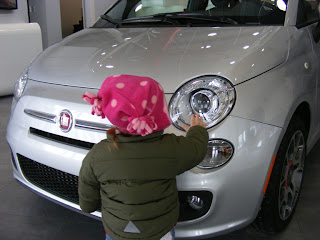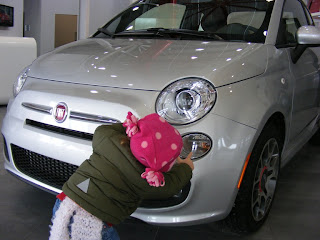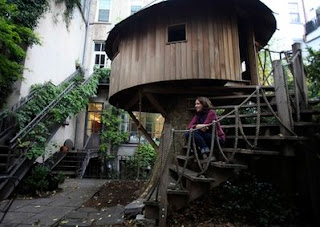The following is copied from the City of Milwaukee's Website. It is a good, breif explanation of what has been called a lifestyle to many, a demographic trend movement to others and essentially the correct way to live for most of us humans. Although this is in Milwaukee's website it is not just about Milwaukee, these are principiles that are shared and embraced amonst most urban centers. Also many of our suburbs enjoy these qualities - suburbs such as, but not limited to, Wauwatosa, West Allis, Cudahy and Whitefish Bay. From my house I can walk to Lake Michigan, a marina, South Shore Park, Humbolt Park, retail shops (like Outpost, Rushmor, etc.), restaurants, coffee shops, bakeries and banks. I can also walk to a few bustops, one of which is the #15 that will go to north to Bayshore, past UWM, through Downtown and all the way South to South Milwaukee. The four Principles of Urban Design are as follows:
Introduction
Cities possess a singular appeal. The proximity of people and activities in cities facilitates efficient use of land and transportation systems and creation of convivial public spaces. Milwaukee must encourage development of housing, commerce and transportation systems that embrace its urban heritage. The city must recognize its unique assets and build upon its strength as the core of a major metropolitan area.
 |
| Milwaukee County Library - Central Branch |
Coordinated planning and development effectively integrate many elements. Quality housing that enhances a sense of community among neighborhood residents; attractive customer-friendly commercial streets; greenspace offering recreational amenities and a diverse array of transportation options represent only a few of the many elements that, when well designed, contribute to good urban form. Milwaukee must promote urban design practices that emphasize the public qualities of buildings and creation of places with lasting value and civic meaning.
New buildings should be designed in ways that retain the traditional qualities of Milwaukee’s architecture. This does not mean that new buildings should nostalgically imitate historical styles. In fact, to do so would be contrary to the creative design traditions that produced Milwaukee’s rich architectural legacy. Timeless design principles should be followed that produce architecture that fits with its context and is human scaled. New buildings should be designed to be compatible with neighboring structures, spaces and activities. Visually interesting and human-scaled building facades should prevail over sterile, windowless walls - especially when facing public spaces.
Diversity is the city’s unique strength. The rich mix of uses found in Milwaukee’s neighborhoods provides convenience, vitality and individual identity. The transportation network binds the city together. Milwaukee must be organized around a transportation network that offers mobility choice. Needs of pedestrians and automobiles should be balanced to create a legible, walkable and memorable public realm.
Combining good design with the city's rich architectural heritage will maintain its unique, attractive, "people-friendly" environment and further enhance Milwaukee’s residents' quality of life.
The following design principles articulate those unique qualities that characterize Milwaukee’s neighborhoods, and are meant to promote development and redevelopment that reinforce and preserve these characteristics.
Principle #1: neighborhood compatibility
A cohesive neighborhood environment depends on buildings that compliment one another. The size, shape and location of buildings as well as the uses contained within them, create "patterns" that define neighborhood character. New development should be compatible with the pattern of its surrounding context.
Development that adheres to this principle will:
A. Relate to the physical character and scale of the neighborhood
B. Enhance linkages to surrounding uses, especially public services and amenities (schools, parks, mass transit)
Principle #2: pedestrian friendly design
Cities are for people, and an environment designed to accommodate the pedestrian heightens human experience and sense of place. New development should be designed to create attractive, comfortable and safe walking environments.
Development that adheres to this principle will:
A. Locate buildings to define street edges and corners
B. Enliven street frontages to enhance the pedestrian experience
C. Create memorable places for people
Principle #3: land use diversity
Many Milwaukee neighborhoods are comprised of a rich mix of land uses. Such diversity uses land efficiently, provides for neighborhood convenience and contributes to unique urban experiences.
Development that adheres to this principle will:
A. Encourage a compatible mix of uses at the neighborhood scale
B. Identify opportunities for shared uses
Principle #4: transportation diversity
Milwaukee’s neighborhoods are connected by a functional circulation network of streets and blocks. This system should be maintained and improved in ways that accommodate various modes of transportation balanced with needs for pedestrians.
Development that adheres to this principle will:
A. Create a balanced circulation system that accommodates mobility choice (pedestrians, automobiles, bicycles and transit)
B. Enhance public transportation by making it more comfortable and convenient to use
 |
| City of Milwaukee, 1898 |
 This is our new house on Lakeside Drive in Lake Worth, Florida. Across the street from it are the Intracoastal Waterway and Bryant Park with walking paths, exercise course and stations, playground, amphitheater, boat ramps, etc. Then not too far east from that is the Lake Worth Beach and the Atlantic Ocean. We are happy to have some water views from the east side of the house. And we can walk to Downtown too. It is also a rare two story craftsman style house that has been modified a bit but not totally destroyed.
This is our new house on Lakeside Drive in Lake Worth, Florida. Across the street from it are the Intracoastal Waterway and Bryant Park with walking paths, exercise course and stations, playground, amphitheater, boat ramps, etc. Then not too far east from that is the Lake Worth Beach and the Atlantic Ocean. We are happy to have some water views from the east side of the house. And we can walk to Downtown too. It is also a rare two story craftsman style house that has been modified a bit but not totally destroyed. 



























